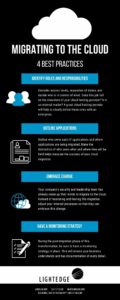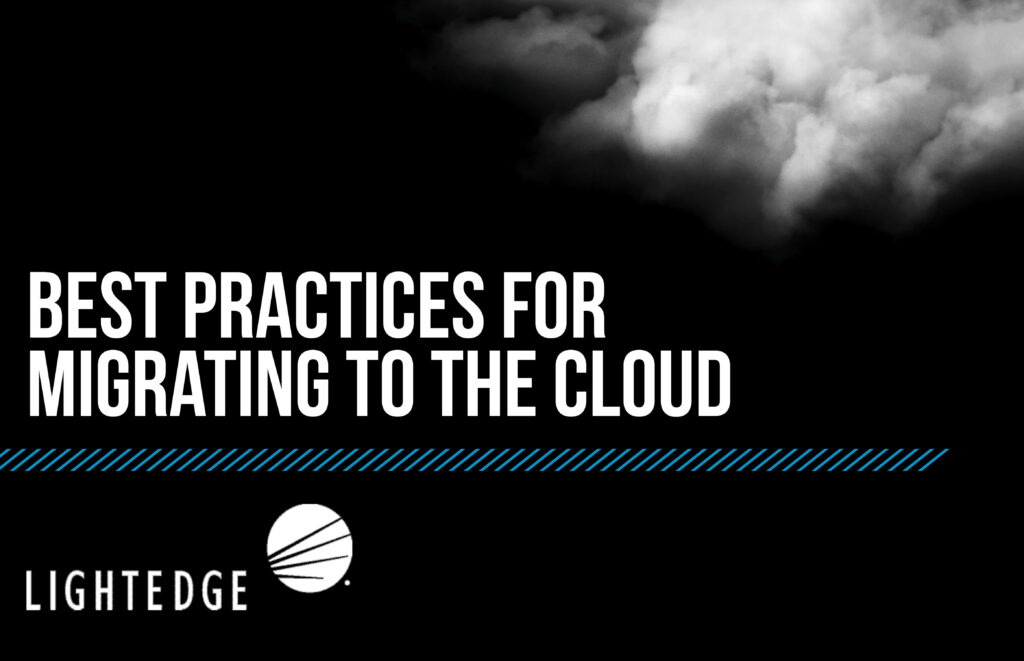For many organizations, data protection is a top priority. Several business and IT leaders are looking to replace their traditional IT services and on-premise technology with power in the cloud. From reducing IT costs to redundancy and flexibility, there are many compelling reasons to make the jump to cloud. However, making the transition can be difficult without a well thought out plan. In this blog, we look at what practices a company can adopt to make their migration to the cloud as seamless as possible.
Cloud Migration Best Practices
The first step to embarking on the cloud journey is to have a good plan in place. Customers often wonder what steps to take when moving their data to the cloud. Although each business is different and has varying goals, there are certain patterns in migration strategies that ring true for every kind of company. Check out these 4 best practices when migrating to the cloud:

Make Your Migration to the Cloud as Seamless as Possible with LightEdge
Protect your data from corruption or loss and quickly restore as needed. Our solutions enable fast, reliable data backup and recovery environments, even as a granular level. You can choose from flexible deployment options based on your goals and budget. Our process allows companies to optimize their WAN bandwidth and encrypt backup data for additional security.
LightEdge also utilizes Vision Solutions’ MIMIX real-time replication tool designed specifically for Power Cloud and IBM i OS, providing a unique backup and disaster recovery solution to the iSeries world.
LightEdge is well known for our ISO 20000 and ISO 27001-validated infrastructure and operations, and constant adherence to reference architecture. LightEdge services are audited regularly to assure compliance with HIPAA, PCI DSS, SSAE 18, HITRUST, and more.
Our highly-trained experts are also knowledgeable about achieving compliance standards like NIST and FISMA. Partner with us to comply with archival and disaster recovery compliance standards.
Data protection best practices recommend maintaining three copies of data, on two types of storage, with at least one in a remote location. This strategy greatly enhances the availability of business-critical apps and data, but it requires separate storage infrastructure.
Ready to put your data protection in the hands of LightEdge’s highly trained engineers? Contact one of our data protection experts to get started or to schedule your private tour of any of our data center facilities. We have disaster recovery, colocation, and business continuity experts standing by to answer any of your questions.




